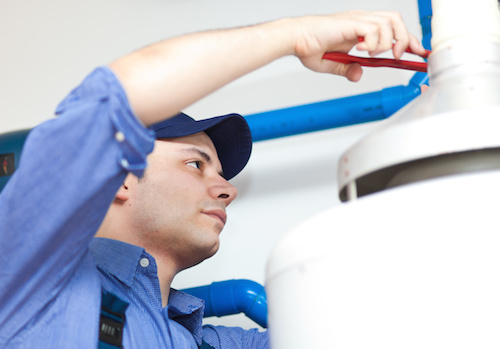 (412) 364-9114
(412) 364-9114

Your water heater comes with a safety feature called a “temperature pressure relief valve.” When the pressure builds up inside of your water heater, the TPR valve releases it. The TPR valve is attached to a discharge pipe that aims the overflow at the floor or ground where your hot water heater is positioned.
If the TPR valve were to malfunction, pressure inside the tank could cause the tank to explode, causing terrible damage to your home. You can see what would happen here:
If the TPR valve starts to overflow and develops a constant drip, this is a sign that your overflow valve is malfunctioning. This can happen if a valve has weakened with age. It can also happen when deposits of minerals build up inside of the valve. Either way, your TPR valve should be checked annually and replaced when necessary. (Unless, that is, you want your water tank to explode) In this post, we’ll describe how to test your TPR valve and replace it.
To ensure it’s working well, your TPR valve should be checked on an annual basis. First, remove the the discharge pipe from the TPR valve. Once this is done, hold a bucket directly beneath the TPR valve and lift the valve gently to open it.
Drain one or two cups out of the hot water tank. Be careful! if you have your hot water tank set to scalding temperatures, you could burn yourself. Wear gloves while you do this and be gentle with the valve to prevent it from releasing an explosive blast of water.
If opening the valve releases no water from the tank, then your valve is clogged and must be replaced immediately. If the valve releases water from the tank but then begins to drip and won’t stop, this is another sign that the valve needs to be replaced.
That’s it! If you’re still not feeling comfortable with this process, take a look at this very helpful video:
Or call us at Terry’s Plumbing. We’ll replace the valve for you and check your water heater for signs of trouble. Contact us at (412) 364-9114.
One thought on “Why Is My Water Heater Overflowing?”
Comments are closed.